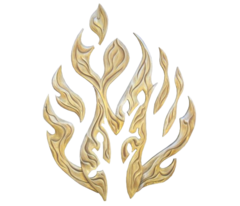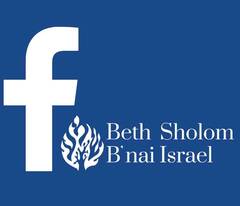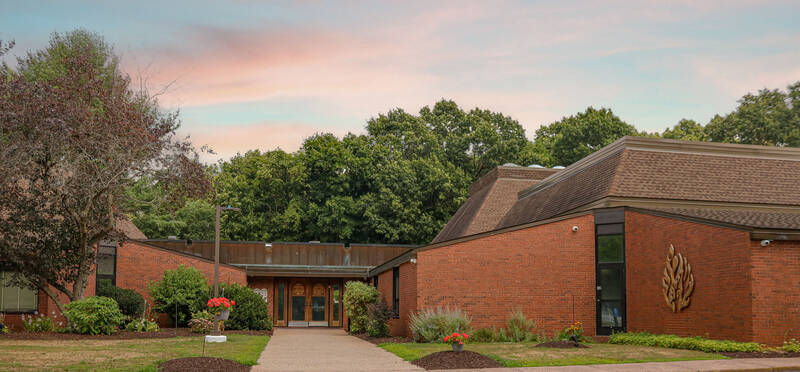Sukkot II 5784 October 1, 2023
Hag Sameach
Today we finally get to take in our hands our Lulav and Etrog so we can fully celebrate this unique festival of Sukkot. The Torah commands us to take palm branches and willow branches as well as two other more obscure plants, “leafy trees” and the fruit of the “hadar” tree. It was the later Sages, trying to make sense of this command, who determined that myrtle branches and the etrog were the mystery plants to be included in the set of four. I have to add that the Hebrew word “Hadar” means “beautiful,” and the Rabbis have an extraordinary time trying to figure out what plant it is supposed to be. They quickly identify it as the etrog, but there are at least ten reasons why hadar must be referring to etrog. Any Rabbi can tell you that when the Sages give ten reasons for anything, it is because they know they have no basis for making the decision at hand. In the end the Sages proclaim that the Hadar must be an Etrog because they say so.
Having determined the content of the four species the next problem is trying to figure out what they represent. What is the meaning of the waving of these four species? What is the Torah trying to teach us? What is God trying to teach us when we gather these four plants and wave them in every direction? Since the Torah, as usual, never gives us a reason, we are free to make up whatever reason we want.
Historians, who try to keep all of human life connected, see in our Lulav a connection to the fertility rituals of ancient pagan tribes. I would think that a ritual that would ensure the fertility of crops and of the flocks would be a ritual of the springtime, not a ritual of the fall. Sukkot is a time to celebrate that the crops are all brought in. It is a time to note that we will have enough to eat over the barren days of winter so that we can survive to plant again in the spring.
There are some who see the lulav as a symbol of God’s bounty. We bind together various kinds of plants and wave them in different directions to show that God provides for us through the four winds that blow and up to the sky and down to the earth. The lulav is our symbol of gratitude.
Every day during the month of Elul, I receive an email called, “Jewels of Elul.” These emails help me get into a good frame of mind for the holidays. One day I received an email called, “Life In Threes” by Molly Selig Kopelman from Chicago, Illinois. This is part of what she wrote:
“Diversity is bound by commonality. As triplets, we could not be more different – our appearance, personalities, and passions. Our differences often caused acrimony, jealousy, and intolerance as children. Though we didn’t understand it then, I believe that we were each impelled to be different in order to find our place in the world. I now understand that diversity is a natural order, a necessary ingredient of survival and balance. My common history of a shared birth and identity with my triplet siblings is more powerful than our differences. Let us all embrace diversity while always searching for the commonality in human experience.
We are never alone. Because of my unique balance with my triplet siblings, I truly believe that I am a part of them, and them me. How lucky I am. I believe that all of us, whatever our circumstance, are not alone. Tell others you love that you are there for them. They need to know. Accept from others their support for you. You need to feel it. It’s a three-ring balancing act.”
We can only imagine the world as seen by triplets who share a common birth and share a common connection that is beyond words. Each one of the three is trying to be a separate person from the other two and yet they will always be connected by forces that they may or may not understand. No matter how they may differ, they will always share their common bond.
As I read Koppelman’s words, I realized that what applies to three also applies to four. The four species we use for our holiday all have distinctive characteristics. The palm branch has no special scent but the fruit of the tree, the dates from a palm tree are sweet. Myrtle branches smell beautiful, but a myrtle tree does not have sweet fruit to eat. The etrog smells beautiful and tastes beautiful as well. The willow branches do not have a beautiful scent to smell nor does the tree offer anything to eat. These four very different plants are all bound together for this holiday. Only when they are brought together can we rejoice on Sukkot.
The Talmud then takes the qualities of each plant and applies them to human attributes. A beautiful scent represents learning, and the tasty fruit represents good deeds. Therefore, according to the Talmud, each of the four species represents the different qualities of a human being.
Some of us are like the palm branch; we don’t have much learning, but we are constantly doing good deeds. Some of us are like the myrtle, we have lots of learning, but we are not so big on doing mitzvot. Some of us are like the willow, we never had the chance to learn, and we do not go out of our way to perform mitzvot. But there are some of us who are like an etrog; we learn, and we do each and every day.
This is the diversity of the Jewish people. We are not all the same; we have different backgrounds; we have different ways of living our lives. Some of us have taken the time to study what it means to be Jewish and some of us live a Jewish life, filling out time helping others and creating a better world.
But like Molly Selig Kopelman, we understand that while we have all gone our separate ways in life, there is still much that keeps us connected. Three people could scatter across the globe and take on disconnected activities, but the fact of their common birth will make them triplets as long as they are alive. The fact that there are four unrelated plants, which share almost no common qualities, can be related to each other when bound together can thus bring joy to our Festival of Sukkot. And finally, we understand that we, the Jewish People, can be as diverse a people as any other tribe of humanity, but our learning and our deeds bind us together forever. Sukkot thus teaches that only when we celebrate our holiday together, can we experience the joy of what it means to be a part of this community of faith.
I once heard a story of the Holocaust, when Nazi troops entered a Jewish shtetl and right in the middle of the town square, spread a Torah scroll on the ground They lined up the Jews and demanded that the Jews step on the exposed Torah. As one might expect, not one Jew moved to desecrate their Torah. Suddenly one man pushed his way to the front of the line. It was Saul the Apostate. The one man who never had anything to do with his Judaism. The one man who practiced nothing. Rumor had it that he had actually converted from Judaism to get ahead in the village. “What is it you need me to do?” Saul asked the soldiers. “Step on the scroll, and we will let you live.” Saul looked only a moment at the exposed Torah, turned to the soldiers and said, “Step on a Torah? Never. Nothing you can do can make me step on a holy Torah.” The soldiers shot him on the spot. Saul died a martyr. But the soldiers tired of the game left the square and let the Jews and their Torah live.
It is not diversity that makes us a special religion. We are all different in our learning and in the way we practice our faith. Some of us are far better at mitzvot than others. Some of us live our lives as religious Jews, others barely acknowledge that we are Jewish at all.
It is on Sukkot though, that we all must come together. It is one thing to pray together on Yom Kippur when our very lives are on the line. It is another thing when we gather together on Sukkot. We are able to experience the joy of our festival only when we get past the diversity and focus on what binds us together. Sukkot calls on us to understand, each one of us has our own way to practice our faith. Each of us has to find our own way through the world. Being a Jew is not about what we wear, where we live, or what we do with our lives. Our joy comes when we are connected to each other by the spiritual bonds of our faith.
As we wave our Lulav and Etrog, as we bring together diverse plants, let us bring together the diverse elements of our community for only when we celebrate together can we experience true joy.
May God always bless us with diversity but let us also know the blessing that in spite of it all, we are never alone. We have you God, and we have each other as we say ….. Amen and Hag Sameach.




